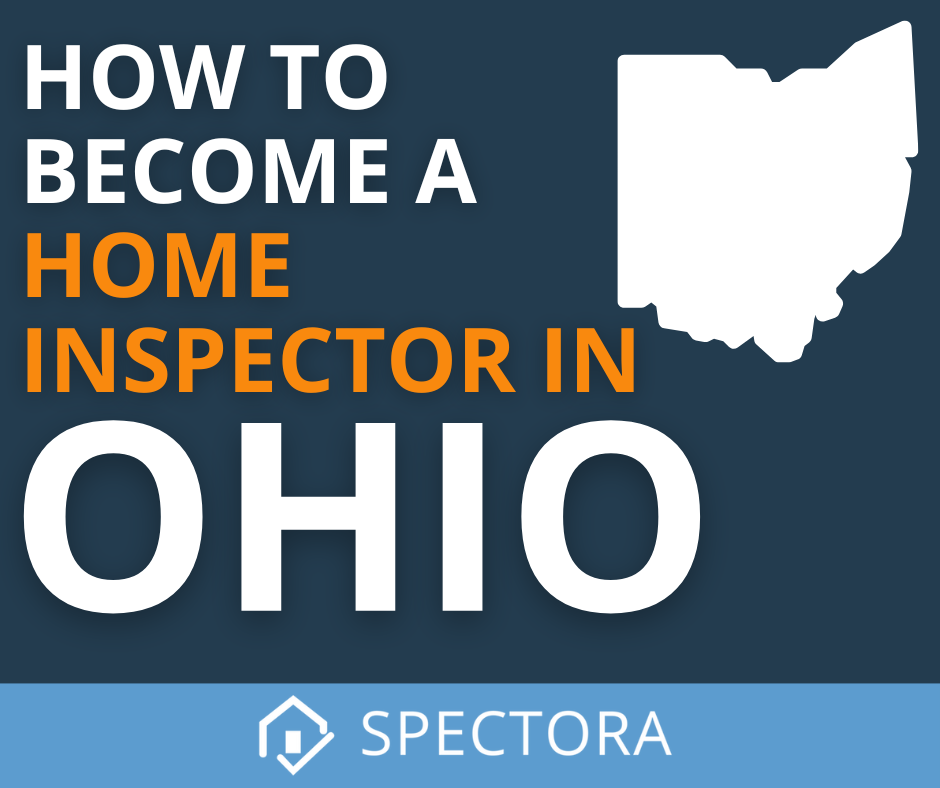How to Become a Home Inspector in Ohio


As of 2019, home inspectors in Ohio must be licensed. Here's everything you need to become a home inspector in Ohio, straight from the Ohio Home Inspector Board.
To become a home inspector in Ohio, here are the steps you'll need to follow:
Here's a list of all the state-approved agencies you can get a background check from. They need to send the results to the Department of Real Estate and Professional Licensing, and it should be done within ten days of filing your application (not before).
You'll need to register your business with the Ohio Secretary of State (do that here) you'll be given an EIN and State Entity number that you'll need to provide on your application.
At a minimum, you need general liability insurance, which covers you for on-the-job accidents and property damage. You need a policy that covers at least $100,000 per occurrence and at least $300,000 in total.
While you don't need Errors and Omissions (E&O) insurance, it's probably a good idea. This can protect you from litigation if a client feels you made a serious oversight that cost them money.
"I think the best quality an inspector can have is knowing that they are never 100% correct and that they will indeed miss things no matter how good they think they are. Therefore, it is a no-brainer to get errors and emissions as well because it's not really a matter of if but a matter of when you will need it," Zach Lewis, licensed Ohio home inspector, said. "Besides, I would rather have it and not need it than need it and not have it as they say."
There are many organizations that provide home inspector training. Here's the full list from the state. ICA has a state-approved one we recommend. Alternatively, you can buy courses for a one-time fee through national training organizations like ICA. ICA's Ohio course is currently $695, but you get the benefit of instructor access and the ability to do your ride-along (aka parallel inspections) that are required later.
This exam costs $225 and you can register for it here. You'll probably want to be prepared, it may be different from your certification course. In fact, they specifically state they don't follow the Standards of Practice that popular training courses like InterNACHI use. Here's a study guide provided by the NHIE.
This is Ohio's term for "Ride Alongs" and means a supervised inspection in which you inspect a home and write a report. The client cannot be yours and must "belong" to the supervisor (meaning, you cannot do this under your own business).
Alternatively, Ohio gives you the option to do 40 hours worth of home inspections either in person or "interactively" meaning online. If you go this route, you also have to complete a peer-reviewed inspection (reviewed by two licensed inspectors).
This route seems like it would be much more work than simply doing 10 parallel inspections, but it probably exists to accommodate applicants who cannot find a business to give them the experience since home inspection schools can provide interactive experiences via their instructors.
Ohio does accept out-of-state licenses for home inspectors, provided they are up to date. You'll still need to meet the other requirements for becoming a licensed home inspector in Ohio, like insurance and background checks.
These are some rules that are atypical in other states, but there's a full list of ethics in Ohio here.
In 2019, Ohio passed legislation requiring home inspectors to get licensed from the state. This legislation also required home inspectors to take measures to protect themselves and the homebuyer, such as creating inspection agreements, requiring a written report, and retaining records for five years.
Any good home inspector was already doing these things. It also required relators to provide at least three home inspectors to a homeowner, a good thing if you're trying to break into the business.
The process of getting licensed can take anywhere from one month to a full year.